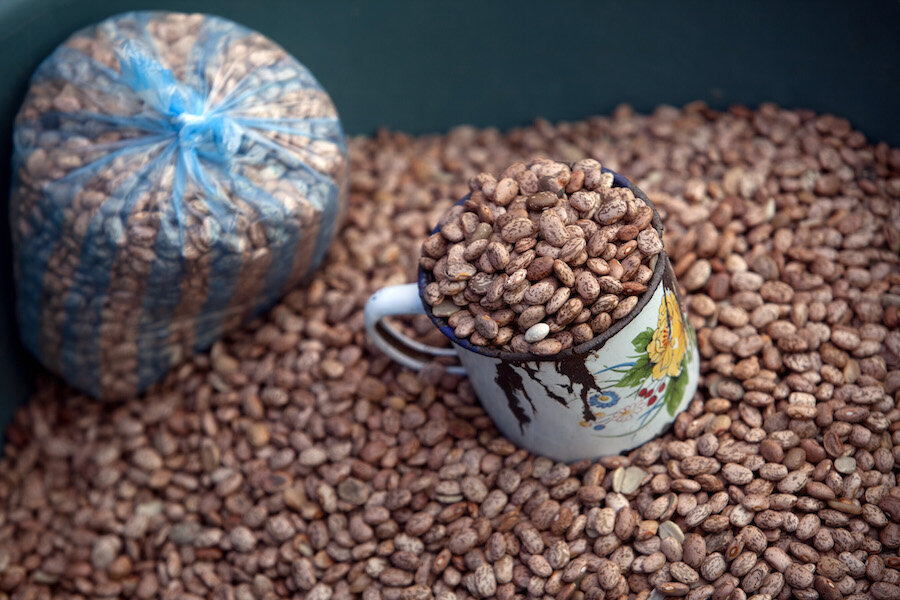Want to fight climate change? Eat more beans.
Loading...
Climate change may seem to many of us a challenge too daunting to tackle directly through our own actions. But there is one small change each of us can do to play our part – shifting our diets to be healthier and more environmentally sustainable.
The type of food we choose to eat makes up a big part of our personal carbon footprint. The meat and dairy that make up 22 percent of developed world diets are responsible for emitting large amounts of greenhouse gases, particularly methane and nitrous oxide. But there is a food group which is highly nutritious, rich in protein and essential micronutrients, with a tiny carbon footprint. Pulses.
An understated food group, pulses include common beans, chickpeas, faba bean, dried peas and lentils, and have an extraordinary range of health and environmental benefits.
Pulses reduce the use of fossil fuels, since they don’t require nitrogen fertilizers (a main component of nitrogen fertilizer is natural gas, a fossil fuel). With a unique ability to “fix” nitrogen from the atmosphere, pulses are able to directly draw nitrogen from the atmosphere and convert it into nutrients vital for plant growth. Growing pulses makes soils fertile, reducing need of fertilizer for even for other crops.
In addition, pulses are highly water efficient. It takes only 43 gallons of water to grow a pound of pulses, compared to a whopping 1857 gallons for beef! By the year 2030, demand for fresh water is expected to increase by more than 50 percent, and agriculture alone accounts for around 70 percent of freshwater use globally. Pulses are the most water-efficient source of protein foods.
Meat consumption per capita has more than doubled in the developing world since 1963, while pulse consumption has dropped by almost 50 percent over the same period. As consumers, by swapping out meat a few times a week and replacing them with pulses, we can substantially reduce our carbon footprint. With virtually no fat, pulses are high in essential micronutrients such as iron, zinc, potassium, magnesium and selenium, dietary fiber, and ‘good’ carbohydrates. To top it all, they are a rich source of protein – three times more than cereals like wheat and rice.
The Climate Clock is Ticking
With climate change, crop resilience to rising temperatures and droughts will become very important for continued food and nutrition security. While pulses are already relatively climate-hardy, they are being developed to be more tolerant to these conditions. For example, the Kabuli chickpea, ‘Gokce’, developed by International Center for Agricultural Research in the Dry Areas (ICARDA) with Turkish national scientists withstood severe drought in Turkey back in 2007 and grew when most other crops failed. Similarly, heat-tolerant faba bean and chickpea lines, being developed by ICARDA scientists in research partnership with Sudan, can withstand temperatures as high as 40 degree Celsius which is important to cope with global warming.
In the dryland areas where ICARDA’s research is focussed, 12 million hectares of productive land is lost every year due to soil degradation – that’s an area about the size of Greece or Bangladesh, so pulses are an important part our strategy for increasing land productivity.
Pulses for the Future
It is clear that pulses are an incredible food and deserve greater attention in both our consumption and production. Pulses crops have not seen the jump in yields as have cereal crops in the past few decades from improved technologies. In the developing countries, there is still a significant yield gap for pulses – 25-60 percent less than their attainable yield.
This gap can be bridged if more funds for research are made available. Improving the supply of pulses would also keep prices affordable for many for whom animal protein is out of reach – we must not forget that around 805 million people in the world are still undernourished, and that pulses are the main source of protein for millions of people, including the 360 million vegetarians in India alone.
For these many reasons, the United Nations has declared 2016 as the International Year of Pulses (IYP 2016). Now is the time to to incorporate more pulses into our own diets.
Lucky for us, in addition to being perfect foods in our fight against climate change, pulses also happen to be delicious and versatile. From falafel and hummus to bean patties, lentil curries, salads and soup, they are easy to make them a part of your daily diet. Check out the many dishes from all over the world you could be cooking tonight – from traditional stews to innovative salads, at www.pulses.org/recipes.
Dr. Mahmoud Solh is the Director General of International Center for Agricultural Research in the Dry Areas (ICARDA).
This article first appeared in Food Tank.







